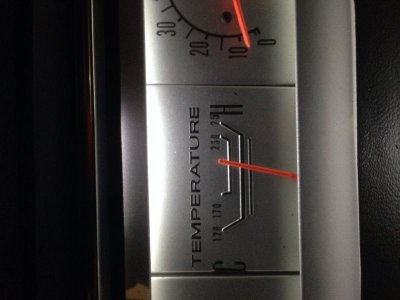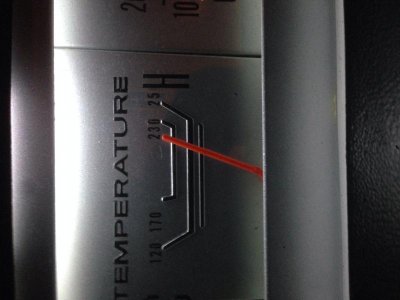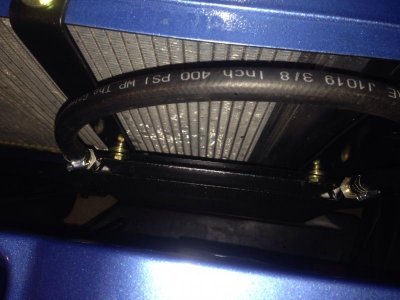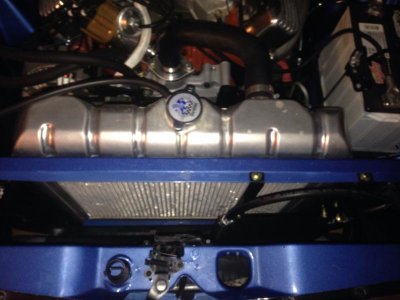Been running the new 451 with mild cam for 1250 miles now. Always had a temp of about 180-190 on the gage (which is supposedly solid state and calibrated by redline gauge works. Have been running an awesome aftermarket aluminum 22" griffin rad with trans cooler lines inside this rad. Works awesome.
However, due to a recent converter change causing the trans vent to puke fluid out of the bell housing, it was suggested to install a plate type external trans cooler which I did last week. In doing so I bypassed the rad trans cooler completely. Also added a rad overflow cannister. Rad fluid level is 2" from top of cap opening.
Now since bypassing the rad trans cooler and adding the external trans cooler, no more trans leak from bell housing. Score! However now my engine temp is very high!
I know 210 is not bad but that is the lowest it is now and it fluctuates between 210-230. Here is my gauge five min after startup today 6pm mild 65 degree evening in Northern California with dry cool air and car moving at 10mph
Now here it is twenty min later driving for ten min at 40mph. It should be a LOT cooler. What gives? Since the trans cooler portion of the rad is now empty is the air inside getting things too hot? Should I run it in series instead?

However, due to a recent converter change causing the trans vent to puke fluid out of the bell housing, it was suggested to install a plate type external trans cooler which I did last week. In doing so I bypassed the rad trans cooler completely. Also added a rad overflow cannister. Rad fluid level is 2" from top of cap opening.
Now since bypassing the rad trans cooler and adding the external trans cooler, no more trans leak from bell housing. Score! However now my engine temp is very high!
I know 210 is not bad but that is the lowest it is now and it fluctuates between 210-230. Here is my gauge five min after startup today 6pm mild 65 degree evening in Northern California with dry cool air and car moving at 10mph

Now here it is twenty min later driving for ten min at 40mph. It should be a LOT cooler. What gives? Since the trans cooler portion of the rad is now empty is the air inside getting things too hot? Should I run it in series instead?



















